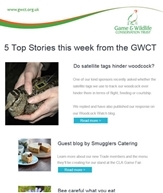Key points
- Yellowhammers prefer to select territories with access to field margins that are enhanced with flowers and legumes.
- The presence of song posts and cut hedges is also preferred, but woodland is avoided.
- Chick-food insects were more numerous in grass margins and enhanced margins than the other habitat types.
- As enhanced margins contain higher plant diversity, they may support chick food species for longer periods of the year than other habitats. This could be why yellowhammers prefer to choose territories containing enhanced margins.
Background
 Growth and change in farming has led to habitat loss for many species in recent decades, and this is likely to be a major cause of decline for both invertebrates (for example, beetles and spiders) and also farmland birds.
Growth and change in farming has led to habitat loss for many species in recent decades, and this is likely to be a major cause of decline for both invertebrates (for example, beetles and spiders) and also farmland birds.
Agri-environment schemes (AESs) allow payments to be made to farmers who manage their land to benefit wildlife, and some of these are designed to improve habitat for invertebrates and farmland birds. This can include techniques such as sowing flower or grass margins around arable fields, or supporting hedgerow maintenance. This study focused on the yellowhammer, a widespread but declining farmland bird that AESs aim to conserve.
What they did
 To investigate whether existing AES habitats are useful for yellowhammers, 21 4km-long transects (lines of study) were selected along field boundaries, on 18 lowland mixed arable farms in southern England. The scientists mapped the yellowhammer territories in these areas, and the habitat around them. Random points along the same transects where yellowhammer were not present, were also selected to use as control areas for comparison. 131 yellowhammer territories and 169 control locations were examined.
To investigate whether existing AES habitats are useful for yellowhammers, 21 4km-long transects (lines of study) were selected along field boundaries, on 18 lowland mixed arable farms in southern England. The scientists mapped the yellowhammer territories in these areas, and the habitat around them. Random points along the same transects where yellowhammer were not present, were also selected to use as control areas for comparison. 131 yellowhammer territories and 169 control locations were examined.
The scientists looked at how much of the following six different habitat types were within 300m of either yellowhammer territories or the control points, and compared them to see which areas yellowhammers preferred to breed close to:
- Enhanced margins (uncultivated strips along field edges that are enhanced with flowers and legumes)
- Grass margins (uncultivated grass buffer strips along field edges)
- Wild bird seed plots (small patches of seed bearing crop along field boundaries)
- Cereal crop (wheat, barley, maize, oats)
- Floral crop (oilseed rape, linseed, peas, poppies)
- Grassland (permanent pasture, rough grazing, meadow)
The abundance of invertebrates was measured in the different habitat types, to look at potential food sources for yellowhammer chicks and the impact of AES management on invertebrate numbers.
Scientists also investigated differences in the following field boundary features between territories and control points:
- Boundary type
- Song post presence/absence
- Ditch width
- If hedges had been cut before the breeding season began
What they found
 There tended to be more “enhanced margin” habitat surrounding yellowhammer territories compared to control points, as well as more elevated song posts, and hedges that had been cut between January and March the same year. Yellowhammers preferred hedges or shrubby hedges containing trees over woodland.
There tended to be more “enhanced margin” habitat surrounding yellowhammer territories compared to control points, as well as more elevated song posts, and hedges that had been cut between January and March the same year. Yellowhammers preferred hedges or shrubby hedges containing trees over woodland.
The species of invertebrates that adult yellowhammers provide to their chicks were more numerous in grass margins, grassland and enhanced margins, compared to floral crops, wild bird seed and cereal crops.
Yellowhammer preference for including enhanced margins in their territories could be due to the more diverse mix of plants giving longer flowering times in these margins, which may mean chick-food invertebrates are found here for a longer period of time.
What does this mean?
Enhanced margin habitat planted under agri-environment schemes seem to be valuable for yellowhammers, and may influence where territories are established. Yellowhammer also choose areas near hedgerows and elevated song posts. Territory choice may also be influenced by vegetation structure, for example to provide protection from predators, as well as by food availability – research on this is much needed. The provision of good-quality feeding and nesting habitats in suitable positions may improve the capacity of the landscape to support yellowhammers.
Read the original abstract
McHugh, N.M., Goodwin, C.E.D., Hughes, S., Leather, S.R., & Holland, J.M. (2016). Agri-environment scheme habitat preferences of Yellowhammer Emberiza citrinella on English farmland. Acta Ornithologica, 51: 199-209.
 Does this page interest you?
Does this page interest you?
If the answer is yes, sign up for our FREE weekly newsletter and get all the latest GWCT research news, event invites and offers delivered straight to your inbox.
Sign up FREE to the Weekly GWCT Newsletter >